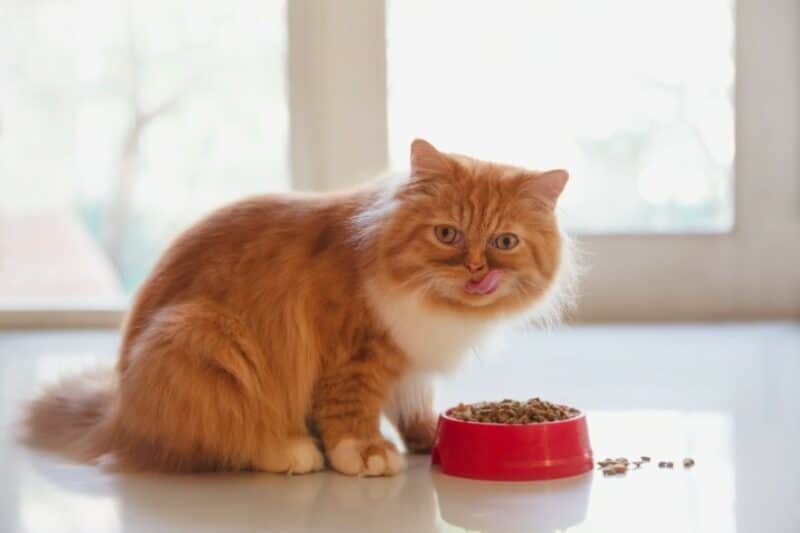Cat owners and toddler parents can agree on at least one thing: dealing with a picky eater is not easy. With preferences changing from one day to the next, feeding picky cats can be frustrating, but is it also a cause for concern? For example, if your cat won’t eat dry food, should you worry?
If your cat won’t eat dry food but is still eating a canned diet, you don’t necessarily need to worry because it may just be a matter of taste. However, if your cat’s appetite has decreased overall or they previously ate dry food and suddenly stopped, or if your cat has exceptionally foul-smelling breath, keeps pawing at their mouth, is drooling excessively or bleeding from their mouth, or swipes at you when you try to touch their mouth, you may be right to be concerned.
Keep reading to learn why your cat won’t eat dry food and what to do about it.
The 5 Possible Reasons Your Cat Won’t Eat Dry Food:
1. Changes in the Food
If your cat normally eats dry food but suddenly rejects it (but is otherwise healthy and begging for meals), there could be an issue with the food. For example, maybe your regular brand has changed recipes or ingredients, and your cat doesn’t like it anymore. Possibly the shape or texture of the kibble has changed too.
For picky cats, it doesn’t take much to turn them off dry food, even if they previously enjoyed it. Your cat may also reject their food if it’s left out too long and doesn’t feel as fresh when they bite into it.
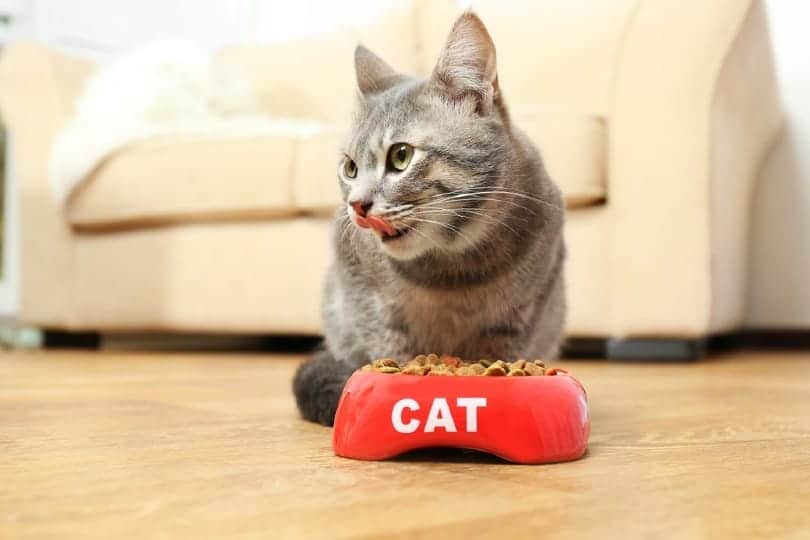
2. They’ve Never Eaten Dry Food
If you adopt an adult or senior cat that won’t eat dry food, it could be because they aren’t familiar with it. Maybe their previous owners only fed them a canned diet or human food. Even cats that aren’t naturally picky might have a hard time adjusting to the crunchy texture or taste of unfamiliar dry food.
3. Dental Issues
A cat who doesn’t want to eat dry food may suffer from dental disease that makes chewing painful. If you notice your cat picking up and dropping kibble from their mouth, be more suspicious of this scenario. You may also notice your cat drooling, holding their mouth open slightly, or find blood in their food and water bowls. Your cat might also have a very foul or weird odor emanating from their mouth.
Ailments associated with your cat’s tongue, their oral cavity, and the back of their throat may also make eating difficult. If you suspect your cat is suffering from dental pain, visit your veterinarian.
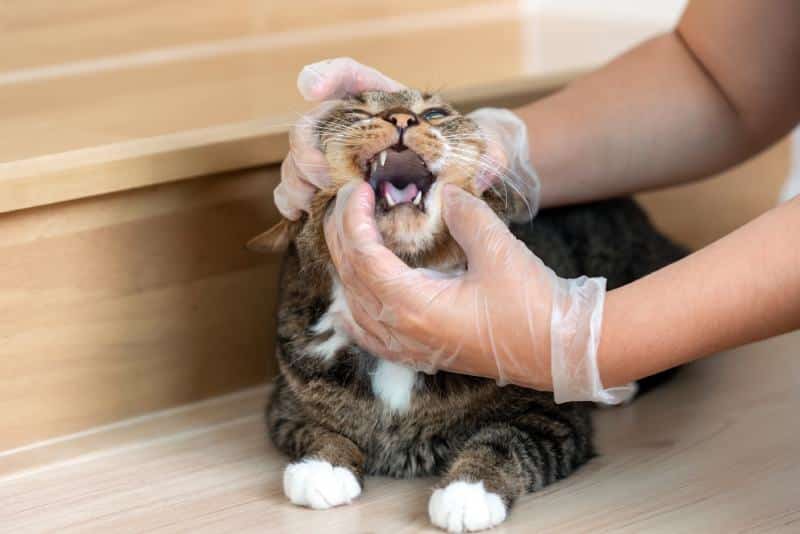
4. Environmental Stress
A decreased appetite can be a sign that your cat is feeling stressed. Maybe your household has experienced changes recently, such as a new baby or visitors. Cats can also become stressed by stray kitties hanging around outside and construction noises.
You’ll most likely notice other signs of stress, such as inappropriate urination, hiding, undergrooming, or overgrooming. Speak to your veterinarian if you’re worried your cat is anxious. Your vet will likely want to rule out medical conditions first and suggest ways to help your cat relax, including medications if needed.
5. Medical Condition
Finally, your cat may stop eating dry food and experience an overall loss of appetite due to an illness or other medical condition. You may notice other signs, such as vomiting, diarrhea, weight loss, and lethargy. Have your cat seen by a vet as soon as possible if you suspect they are sick, especially if they stop eating altogether.
A loss of appetite might also be caused by renal issues, especially if you notice your cat eating less but drinking more water.
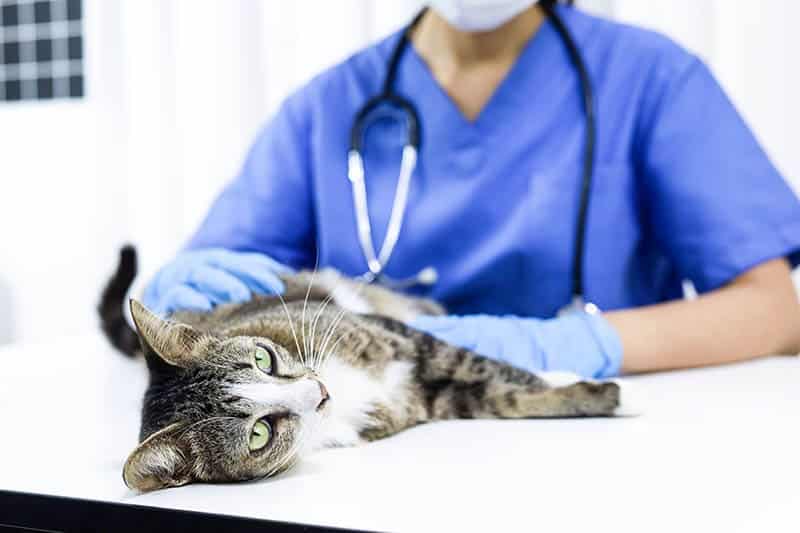
Why Not Eating Is Dangerous for Your Cat
Even if your cat doesn’t stop eating dry food due to an illness, eating less food overall can spell trouble. Cats, especially overweight kitties, are vulnerable to a dangerous medical condition called hepatic lipidosis.
Hepatic lipidosis, or fatty liver syndrome, occurs when fat cells build up in the cat’s liver, leading to impaired liver function. It can occur as a side effect of other medical conditions or pop up in otherwise apparently healthy cats. Not eating or eating less than normal is the usual connecting factor for cats who develop hepatic lipidosis.
This condition can develop after just a few days, so don’t waste time finding out why your cat isn’t eating. This is also why you should not place an overweight cat on a “crash diet” by making them fast.
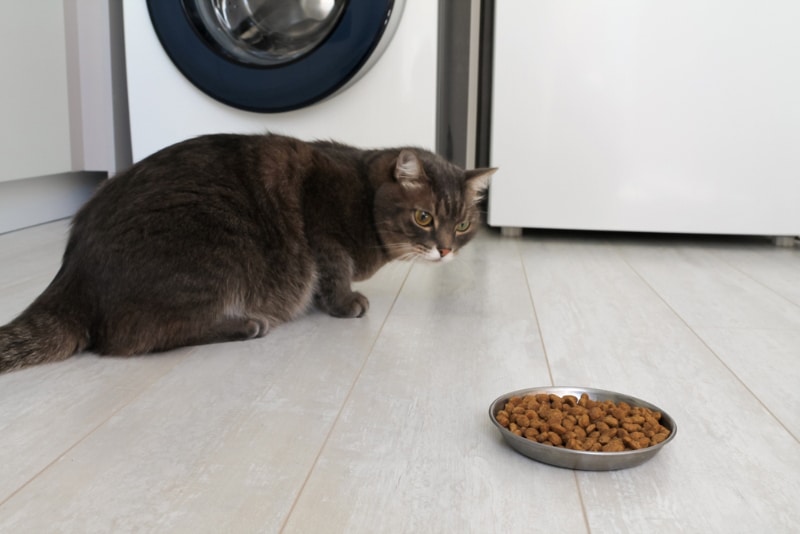

Tips to Encourage Your Cat to Eat Dry Food
Dry food is generally cheaper overall than canned and has a longer shelf life than other types of diets for cats. Though your cat’s diet is a decision you need to carefully consider with input from your veterinarian, you may prefer your cat to eat dry food. Here are some things you can do to encourage your picky cat to eat dry food.
- Rule out a medical condition or environmental stress as a cause of the appetite change first. Treating or managing these issues is the most important thing you can do to restore your cat’s appetite.
- Once you confirm your cat is refusing dry food for other reasons, try a different brand or flavor. Maybe your cat has just grown bored of their current kibble. Take several days to transition your cat’s diet gradually, if possible, to prevent an upset stomach.
- Another option is to offer your cat small amounts of food several times a day, removing it after about 15–30 minutes each time. This can help encourage your cat to eat once they realize they’re looking at a “use it or lose it” situation.
- Try mixing or topping your cat’s dry food with wet food to make it more appealing. You can also ask your vet if adding tuna juice, chicken broth, or other safe human foods to the dry kibble is okay. However, you don’t want your kitty to develop too much of a taste for these, so try to phase them back out once your cat’s appetite returns.
Conclusion
If your cat doesn’t eat dry food, there could be several factors to blame, including some that should make you worry. Getting to the bottom of your cat’s appetite change quickly is essential to limit their risk of developing hepatic lipidosis. Some cats don’t like dry food, but you have other options to keep them healthy.
If you’re worried about your cat’s dental health if they don’t eat dry food, ask your vet what other options for oral care are available.
Featured Image Credit: Patrick Foto, Shutterstock

